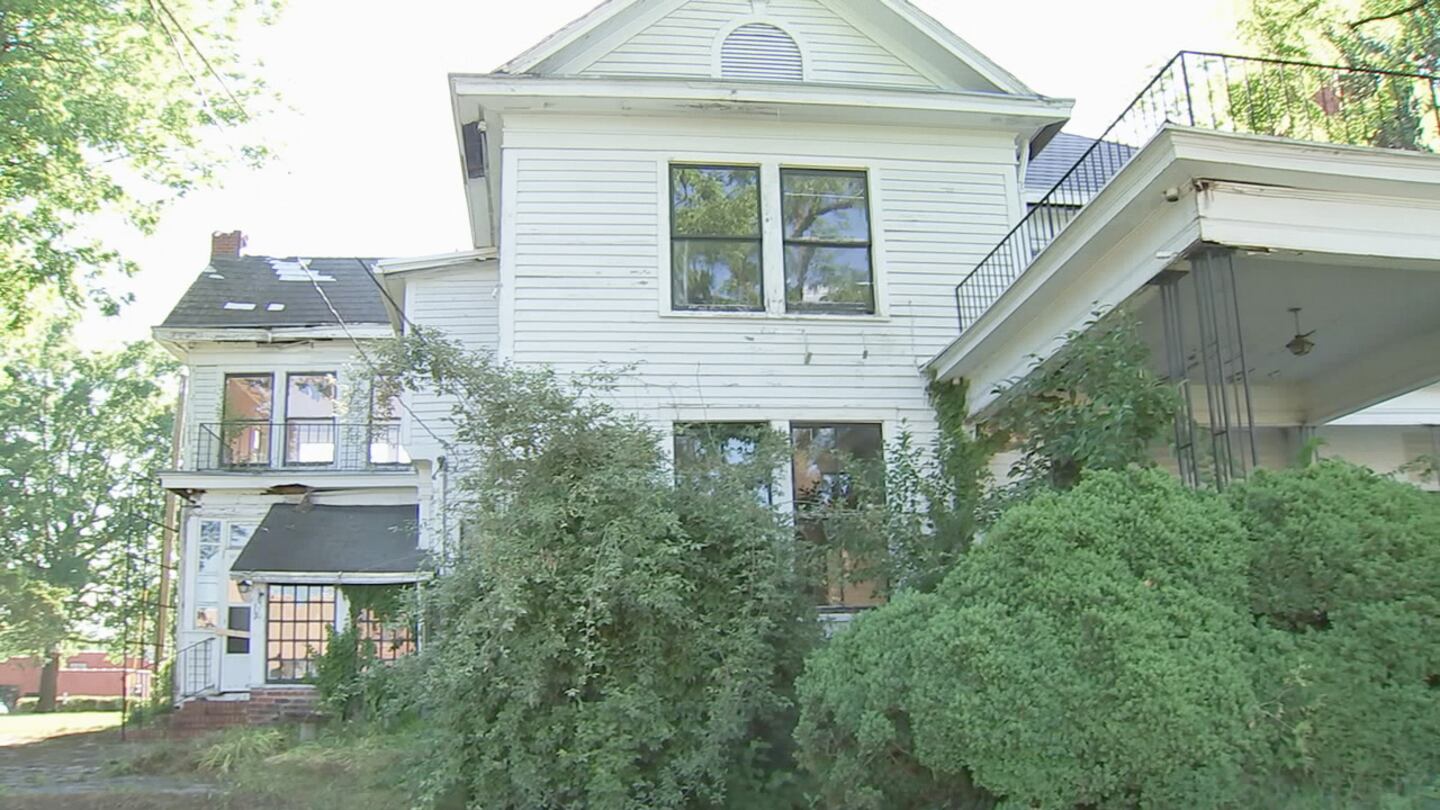MONROE, N.C. — The oldest home in Monroe’s historic district will be torn down, despite hundreds of people trying to save it.
The Laney Lee house was built around 1858.
The home on East Windsor Street has been vacant for years and was willed to a nearby church.
Residents said the church is planning to demolish the home and replace it with a parking lot or garden unless someone wants to relocate the home and preserve its history.
“It’s our responsibility to the future of Monroe and the past to preserve its history,” resident Robert Yanacsek said. “I don’t think it’s been marketed to the public in general. The house, according to the church, is for free for anyone who would like to move it.”
[ALSO READ:SLED investigating after flames engulf historic Pageland home]
Monroe’s Historic Commission could have voted to extend demolition 180 days Monday night, but it decided the 161-year-old home can be destroyed immediately.
Theresa Eaman has been a part of the fight over what will happen with the home for years.
She created a Facebook page four years ago to drum up support.
“It’s history,” Eaman said. “How do we know who we are if we don’t preserve the history that is ours?”
Below is the full statement from St. Paul's Episcopal Church, which owns the home:
"On May 13 the City of Monroe’s Historic District Commission granted St. Paul’s Episcopal Church a Certificate of Appropriateness (COA) to demolish the Laney-Lee House. As one of the oldest residences in Monroe, this house is a matter of deep concern for preservationists, neighborhood activists, and others. It has also been an integral part of St. Paul’s history, and our parishioners have nearly two decades worth of poignant memories connected with it.
The decision to request a COA to demolish the structure came after years of study, deliberation, and painful soul-searching by church leadership. The house was deeded to the church in 1989, and for almost twenty years it served as the rectory for the parish priest and his family. In 2008 that priest retired; and after the house had been vacated, it was obvious that it would require major repairs to be habitable. Because of its historic significance, St. Paul’s contacted a historic preservation professional to discover the extent of the work that would be required and to gain some idea of the costs to restore the house. Both were overwhelming, particularly when we considered that those figures would not provide for annual maintenance.
In the intervening years, St. Paul’s consulted other professionals for engineering studies, historic reconstruction recommendations, and itemized estimates for asbestos abatement and lead-based paint removal. All of these studies, recommendations, and estimates forced us to accept the fact that we truly could not afford to restore the building; but in our hearts we continued to fight the prospect of anything else. We entered into negotiations with two separate individuals who wanted to remove the house from its current location and restore it.
In late 2012 St. Paul’s reached an agreement in principle with a potential buyer who planned to approach the Historic District Commission for permission to move the house to a nearby location, but after months of postponements and failures to progress, the buyer notified the church in January of 2014 that he no longer wanted the house.
Another individual came to the church in June 2015 with an interest in acquiring and moving the house to a new location within the Historic District. Church representatives, the prospective buyer, and a City-appointed committee held extensive discussions and negotiations and explored options for the Laney-Lee House’s preservation. In early 2016 St. Paul’s sold the house to that person for $1.00 and granted a two-year lease of the lot on which the house stands for another $1.00 to allow time for stabilizing and removing the building. The City offered assistance to both the church and the buyer and indicated a willingness to provide land for the relocated house. Two years passed with no discernible progress, and then St. Paul’s extended the ground lease for another year.
The ground lease extension expired in March of this year. When the church contacted the owner, she made it clear that she was no longer in a position to move the house. Church leaders then met to discuss what their next steps should be.
The facts to consider—then and now—were plain and simple, even if sentiments were not.
-A house of historical importance to the city is sitting next to the St. Paul’s nave on a lot owned by the church.
-Years without proper maintenance and protection have allowed the Laney-Lee House to fall into a state of such disrepair that it has become potentially dangerous for anyone to enter.
-The house continues to entice curiosity-seekers and those seeking shelter to visit.
-Restoration costs are far, far beyond anything that our small church can afford.
-St. Paul’s has spent almost six years in a holding pattern while qualified buyers worked out details for moving the house, yet the only visible progress has been the accelerated deterioration of that house.
After considering all these points, church leaders regretfully concluded that demolition is the only viable option and asked the owner of the Laney-Lee House to allow us to re-acquire it for that purpose.
Now we are faced with decisions that must be made before we can even consider a timetable. The only certainty is that nothing will happen overnight. First, we hope to work with an architectural salvage expert to discern whether the house has items of historic significance that might be used to grace similar historic properties. We hope, too, that the sale of such items could help to defray some of the costs we will face.
With no current estimates for the cost of demolition, our next step must be to consult professionals who are certified for asbestos abatement. After a definitive cost has been established, we must find funding for it.
Only after these hurdles are crossed can we realistically consider plans for the lot. Multiple suggestions have been made, but we have not considered any of them in depth. It is far too soon for such a decision.
In these and all other decisions, the church’s nine-member Vestry will proceed only after exploring all options, having conversations with parishioners, and praying for guidance."
Read more top trending stories on wsoctv.com:
- Officials: 3 rescued, 1 drowned after boat sinks on Catawba River
- Troopers: Driver who hit bus carrying preschoolers in Stanley Co. dies
- Police: South Carolina man hid $200K of stolen goods in network of tunnels
- FORECAST: Showers and mild temps before big heat wave rolls in
- South Carolina father shoots daughter he mistook as intruder
Cox Media Group









